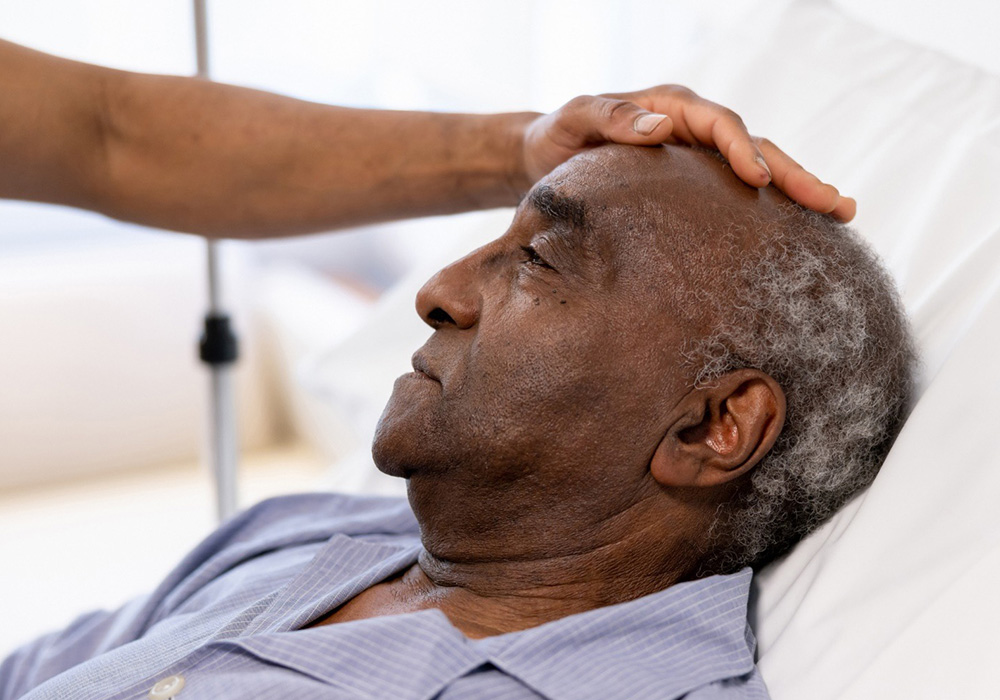Most patients who die from cancer do not use hospice at the time of their death, ONS member and oncology nurse researcher Dena D. Shore, PhD, RN, OCN®, CNE, reported in an article published in the December 2023 issue of the Clinical Journal of Oncology Nursing (CJON). According to her literature review, cancer-related, ethnic and racial, and geographic disparities are frequently involved in delayed or nonuse of hospice care.
Hospice Care in Patients With Cancer
Distinct from palliative care, which is provided concurrently with curative treatments, hospice care provides comfort and symptom relief when curative treatment is no longer attainable or desired, Shore said. “About 14.8% of all Medicare beneficiaries have a cancer diagnosis, which equates to more than 11.5 million people in the United States, [but] a cancer diagnosis accounted for only 7.5% of 1.72 million Medicare beneficiaries using hospice in 2020,” she cited.
Shore conducted an extensive literature search for studies of hospice use in U.S. patients with cancer published from 2017–2023. Her review was based on 17 studies. See the full CJON article for a detailed table highlighting each study.
Disparities That Contribute to Late or Nonuse
Shore’s review revealed disparate hospice care use among patients with cancer that related to type of cancer, race and ethnicity, and other factors, such as living in a rural area.
Type of cancer: Patients with breast or colorectal cancer were less likely to use hospice care, Shore said. Patients with hematologic cancers were 65% more likely to die in the hospital and 25% less likely to die at home, according to the studies. However, patients with distant metastasis at diagnosis were more likely to enroll in hospice in their final 30 days of life.
Race and ethnicity: Patients who were Black, Asian, or Hispanic were less likely to use hospice services than White patients, and patients who were Black or Hispanic and spoke English as a second language were less likely to receive hospice referrals. Patients in minority groups were also more likely to unenroll from hospice. Despite increases in hospice enrollment, the relative disparity between White and Black patients grew over time, Shore reported.
Geographic and other disparities: Patients from minority groups with malignant glioma who were younger, male, less educated, and rural dwelling were less likely to enroll in hospice services, Shore said, and patients with cervical cancer who were treated in rural hospitals more often died in the hospital. However, she also found that some studies suggested that a shorter length of stay in hospice may be beneficial for patients and may be an area for additional research and inquiry.
What This Means for Oncology Nurses
“Overall, this review of the literature confirms that hospice care is underutilized, particularly among minority groups,” Shore concluded. Based on her findings, Shore had several suggestions for oncology nurses to improve use and quality of hospice care for patients with cancer:
- Inquire about organizational-level metrics to see where their units or facilities stand regarding hospice use for patients with cancer.
- Critically evaluate the care of individuals in minority groups at their practice and provide equitable education and options for hospice services.
- Develop and establish standardized interventions to improve hospice care among patients.
- Evaluate their own understanding of hospice and end-of-life care and complete professional development activities (see sidebar).
For more context about the current rates of hospice use in patients with cancer, including two case studies, refer to Shore’s full CJON article.






